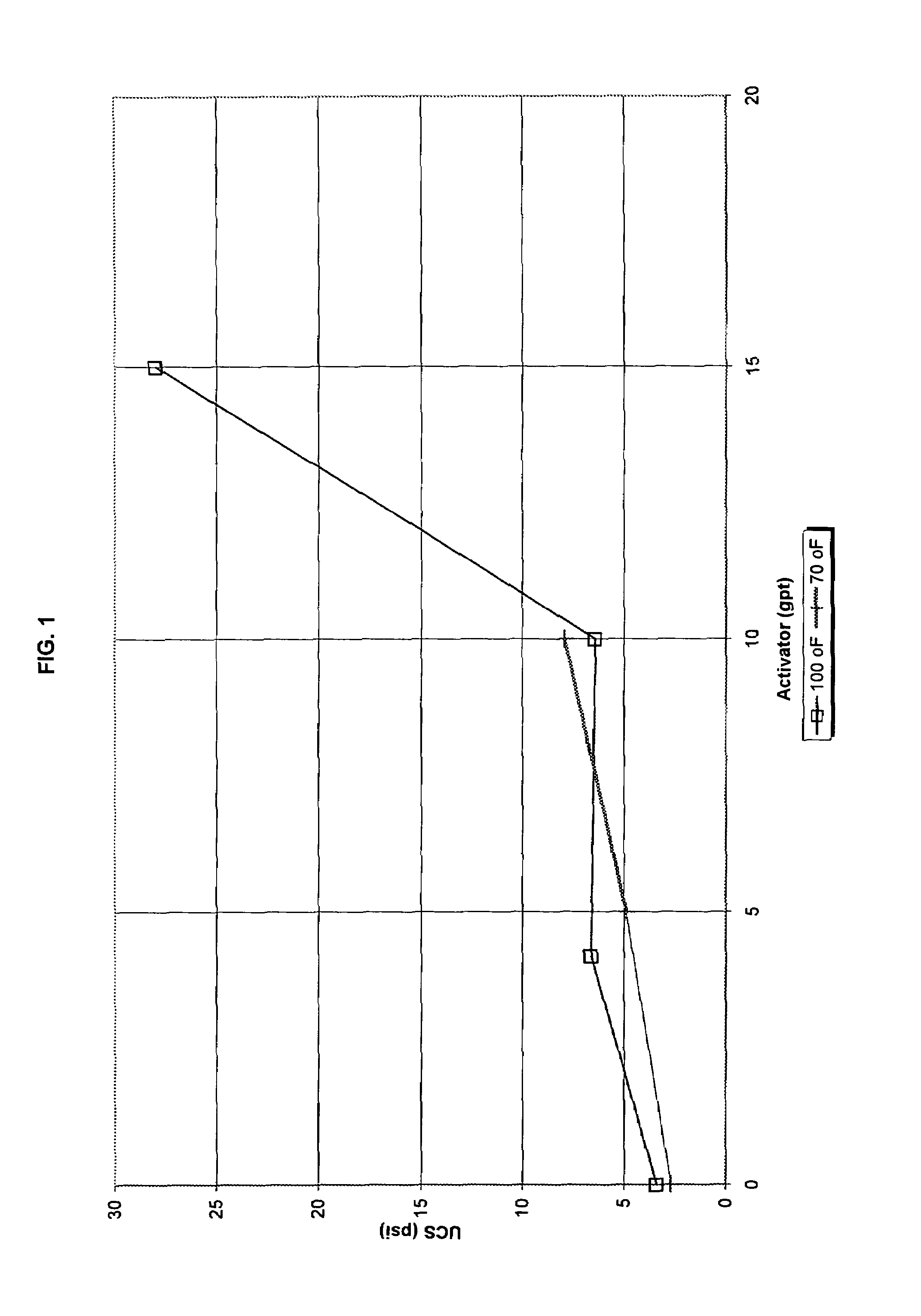Coated plastic beads and methods of using same to treat a wellbore or subterranean formation
a technology of coating and plastic beads, which is applied in the direction of cellulosic plastic layered products, wellbore/well accessories, separation processes, etc., can solve the problems of reducing the production rate, serious damage to well tubulars and well surface equipment, and ulw particulate materials that do not demonstrate the acid and chemical resistance properties required of particulates, etc., to achieve excellent control of formation sand and production rate
- Summary
- Abstract
- Description
- Claims
- Application Information
AI Technical Summary
Benefits of technology
Problems solved by technology
Method used
Image
Examples
example 1
[0049]This Example illustrates the ability of curable resin coated PSDVB beads withstand greater than 20 psi stress without breaking.
[0050]Curable phenolic resin coated polystyrene divinylbenzene (PSDVB) beads (containing 10 weight percent divinylbenzene) were prepared by heating the beads in the presence of 7.5% (wt) of phenolic resin. As the temperature increased, the resin melted. The higher the temperature, the quicker the resin cured. At the point where the phenolic resin became to demonstrate signs of a “breakout” or “dryout” where the beads separated, heat was removed to limit the amount of curing.
[0051]A core was made by mixing 100 grams of the resulting curable resin coated PSDVB beads with about 100 ml of 2% potassium chloride solution and from 0 to 15 gallons per thousand (gpt) (1.5 volume percent) of activator, commercially available from Santrol as SuperSet P™. The resulting slurry was introduced into a two-inch diameter high pressure high temperature (HPHT) 500 ml stai...
example 2
[0054]This Example illustrates the insolubility of the curable resin coated particulates of the invention in acid media.
[0055]PSDVB beads (containing 10 weight percent divinylbenzene) having a phenolic curable resin coating were prepared in a manner similar to that set forth in Example 1 above. The particulate exhibited a tan color with fine particles ranging in color from dark brown to light orange. Samples were dried for one hour at 150° F. in order to obtain a constant weight. Acid solubility tests were then conducted with the sample at room temperature in 15% HCl and 12% HCl-3% HF systems. Each acid solubility test was run in triplicate. In each test, a 5.0 gram sample of the particulate was added to a plastic bottle and 100 ml aliquot of acid was added. Each sample bottle was then thoroughly mixed and allowed to stand for one hour at 70° F. After the one-hour incubation period, the acid and the particulate solids were filtered through a Whatman #1 filter paper to collect the re...
example 3
[0058]A phenolic curable resin coated PSDVB particulate was prepared as set forth above in Example 1. Conductivity tests were performed on the phenolic curable resin coated PSDVB particulate as well as the uncoated PSDVB particulate in accordance with a modified API RP 61 (1st Revision, Oct. 1, 1989) using an API conductivity cell with Ohio sandstone wafer side inserts to simulate the producing formation. A multilayer pack of the composite containing about 31.5 g of particulate was then loaded between the sealed sandstone wafers to increase the propped width. The conductivity cell was then placed on a press while stress was applied at 100 psi / minute until the target temperature was reached. Fluid was then allowed to flow through the test pack maintaining Darcy flow. The differential pressure was measured across 5 inches of the pack using a “ROSEMOUNT” differential pressure transducer (#3051C). Flow was measured using Micromotion mass flow meters and data points were recorded every 2...
PUM
| Property | Measurement | Unit |
|---|---|---|
| weight percent | aaaaa | aaaaa |
| weight percent | aaaaa | aaaaa |
| specific gravity | aaaaa | aaaaa |
Abstract
Description
Claims
Application Information
 Login to View More
Login to View More - R&D
- Intellectual Property
- Life Sciences
- Materials
- Tech Scout
- Unparalleled Data Quality
- Higher Quality Content
- 60% Fewer Hallucinations
Browse by: Latest US Patents, China's latest patents, Technical Efficacy Thesaurus, Application Domain, Technology Topic, Popular Technical Reports.
© 2025 PatSnap. All rights reserved.Legal|Privacy policy|Modern Slavery Act Transparency Statement|Sitemap|About US| Contact US: help@patsnap.com


